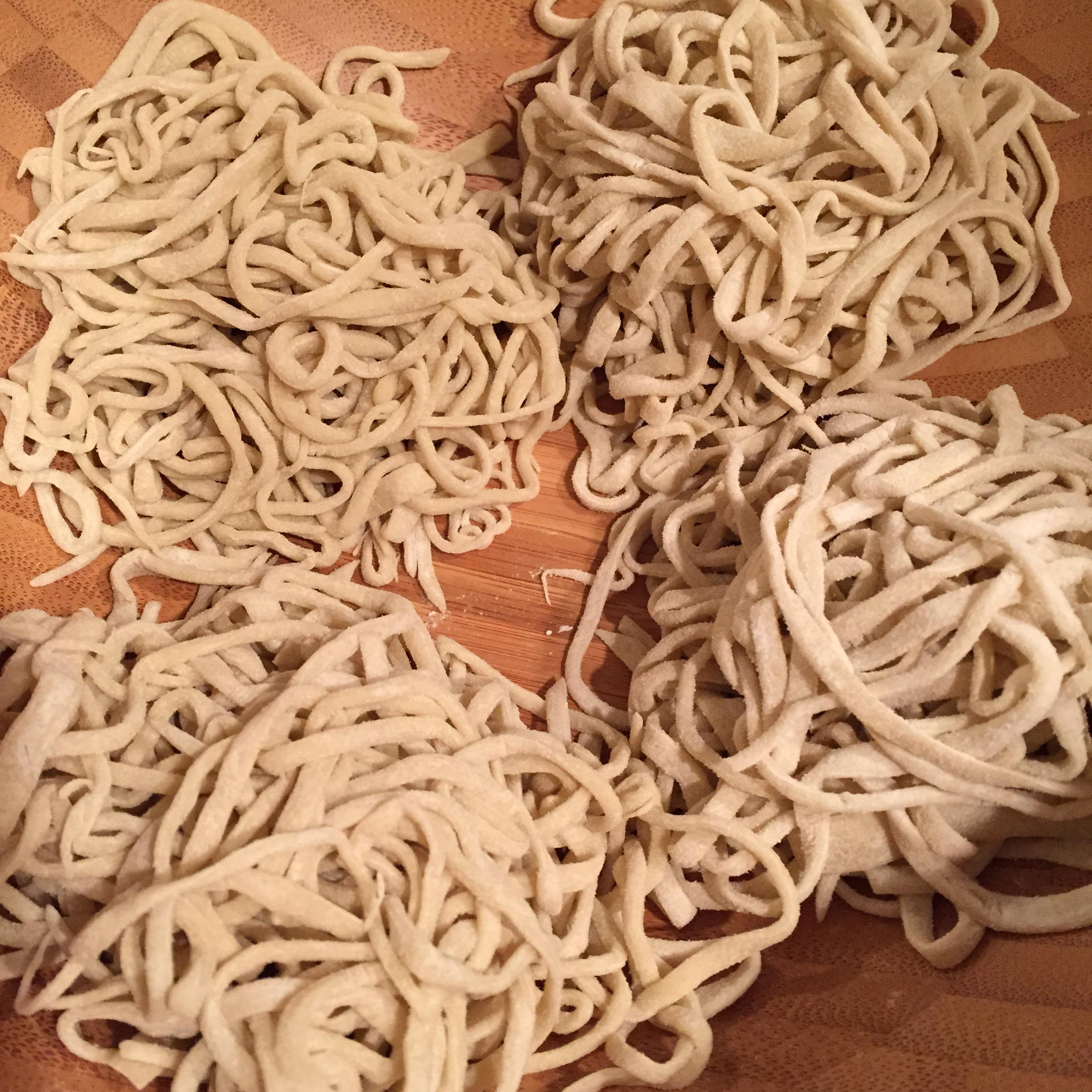I am just gonna leave this right here.
I have not done it myself, but I have been looking into it. Going to try this weekend if I have time. This was pulled from a Japanese site.
That is all. Some people also throw in an egg yolk which would make it more supple, but the above ingredients are the basics. And indeed in China that is all they use for la mian (ramen).
If I am able to do it this weekend, then I'll come back with pictures. I leave the ramen soup up to you. If you get good at this and open a ramen shop and make millions, please remember me and make a Fil Special ;-)
You're welcome.
I have not done it myself, but I have been looking into it. Going to try this weekend if I have time. This was pulled from a Japanese site.
- 200g high protein/gluten flour
- 2g (1%) salt (optional but recommended)
- 2g (1%) sodium carbonate aka washing soda aka soda ash (or you could bake baking soda) -- don't touch with bare hands, you can (will?) burn yourself.
- 90ml water (we're going for 45% hydration here)
- Extra flour if you deem necessary.
- Mix salt into water.
- Slowly mix sodium carbonate into water. Apparently if you just dump it in, it will be hard to dissolve it.
- Sift flour into large bowl (unless it is fresh!).
- Add water mix slowly (in increments) to the flour. Using chopsticks, stir the flour in a circle. You're looking to break the flour up with the water, into tiny pieces much like how you cut butter into flour for pie crust. Alternatively you could rub the flour between your hands, lightly, which is how the Japanese do it for all their noodles. The flour will turn yellow due to the sodium carbonate.
- Once the water has been mixed in and all the flour has a similar broken up tiny piece consistency, bring it all together in a lump and start kneading it. Push down and forward, roll it back. Repeat. Stop once it is fairly consistent but still rough.
- Wrap and let rest for an hour.
- Knead again until smooth and supple, but don't need too long because once it starts to break apart you've ruined it. (the akali from the sodium carbonate makes the dough tougher than normal).
- Wrap and let sit for 30-40 min.
- Next you have two options.
A. Hand pull the noodles, which is beyond the scope of this. Much harder, though funner methinks.
B. Throw in a zip lock bag and step on it to flatten it. Cut up into strips, and run through a pasta machine as you would regular pasta minus the folding back in on itself. (You can also roll it out with a rolling pin, though this is also harder than it looks).
C. Technically there is a third option, which involves rolling out with a rolling pin, then zigzag fold, and slice. I suggest going with option B if you have a pasta machine.
That is all. Some people also throw in an egg yolk which would make it more supple, but the above ingredients are the basics. And indeed in China that is all they use for la mian (ramen).
If I am able to do it this weekend, then I'll come back with pictures. I leave the ramen soup up to you. If you get good at this and open a ramen shop and make millions, please remember me and make a Fil Special ;-)
You're welcome.

